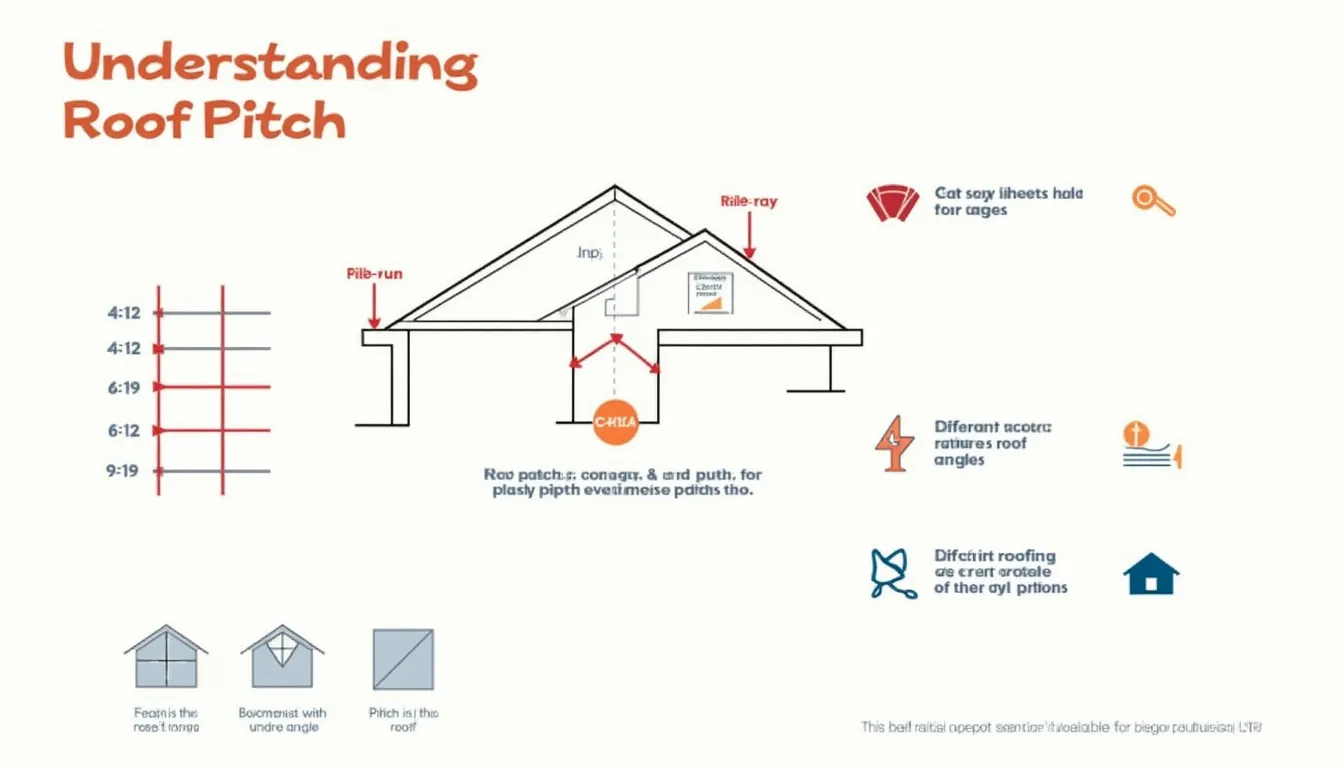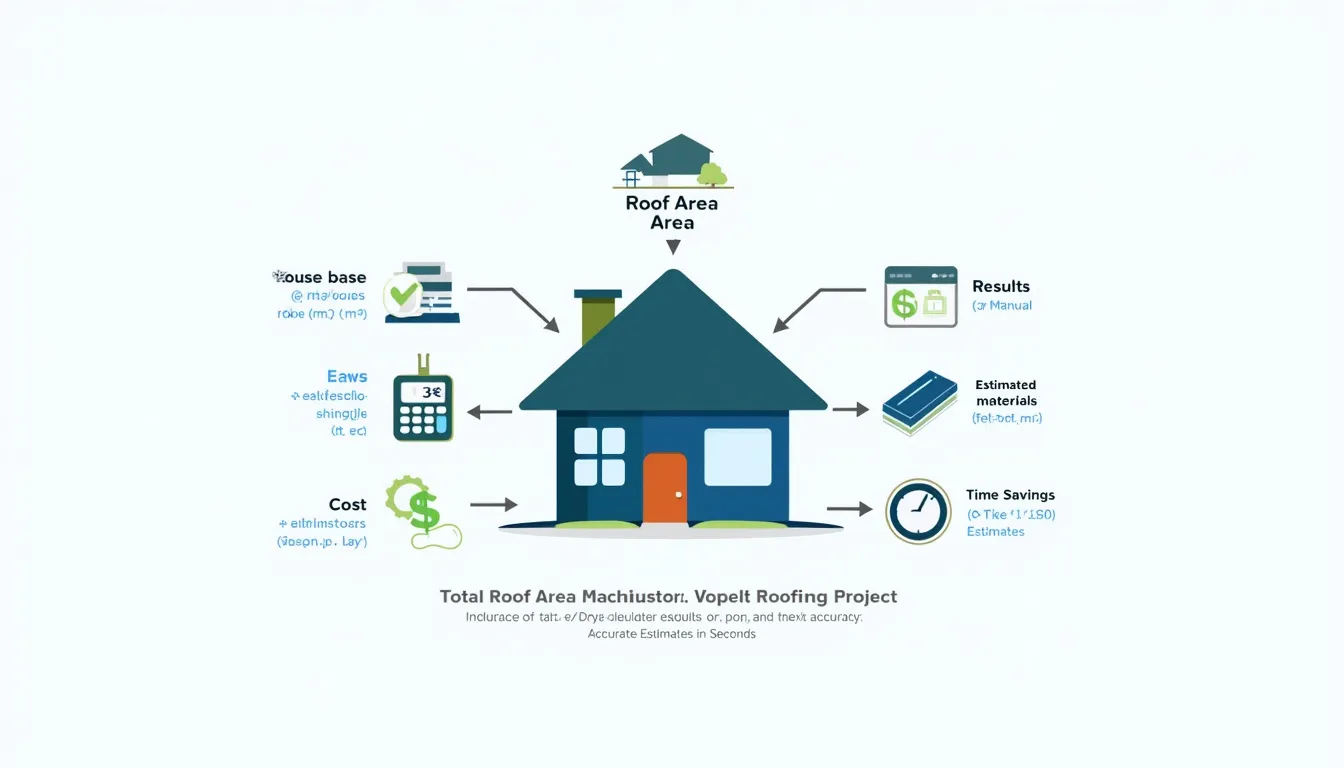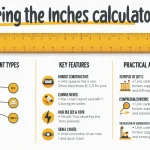Roof Pitch Calculator
Is this tool helpful?
How to use the tool
- Rise – type the vertical height. Example 1: 9 ft. Example 2: 2.6 m.
- Run – enter the horizontal distance. Example 1: 15 ft. Example 2: 4 m.
- Angle (°) – if known, supply it instead of rise or run. Example 1: 28 °. Example 2: 40 °.
- Pitch ratio – write it as rise:run (e.g., 5:11 or 7:18).
- Units – pick feet, inches, or metres, then press “Calculate”. Provide any two fields; the tool computes the rest.
Key formulas
- Angle: $$\text{Angle}= \arctan \left( rac{\text{Rise}}{\text{Run}} \right) \times 57.2958$$
- Percentage slope: $$\text{Slope %}= rac{\text{Rise}}{\text{Run}}\times100$$
- Pitch ratio: $$\text{Pitch}= \text{Rise}:\text{Run}$$ (commonly scaled to a 12-unit run).
- Rise from angle: $$\text{Rise}= \text{Run}\times\tan(\text{Angle})$$
- Run from angle: $$\text{Run}= rac{\text{Rise}}{\tan(\text{Angle})}$$
Example A
- Given: Rise = 9 ft, Run = 15 ft.
- Angle = atan(9/15) = 31.0°.
- Slope %= (9/15)×100 = 60 %.
- Pitch ratio = 9:15 ≈ 7.2:12.
Example B
- Given: Angle = 40°, Run = 4 m.
- Rise = 4 m × tan 40° = 3.36 m.
- Slope %= (3.36/4)×100 = 84 %.
- Pitch ratio ≈ 10:12.
Quick-Facts
- Minimum shingle roof pitch: 4:12 (ICC R905.2.2-2021).
- “Roof coverings shall be installed on slopes ≥2:12” (IRC R905.1.1-2021).
- Design snow load in cold U.S. zones: 20–30 lb/ft² (FEMA Snow Load Guide, 2021).
- Optimal solar-panel tilt ≈ local latitude ±15° (NREL PVWatts, 2022).
- Average asphalt-shingle cost: $4–$7 per ft² installed (HomeAdvisor Cost Guide, 2023).
What is roof pitch?
A roof’s pitch is the steepness expressed as rise over run, usually scaled to a 12-unit run (ICC 2021).
How do I convert a 6:12 pitch to degrees?
Compute arctan(6/12) = 26.6°; the calculator returns the same result instantly.
Why does pitch affect material choice?
Manufacturers specify minimum slopes—metal panels suit 3:12, while shingles need at least 4:12 (GAF Roofing Manual, 2022).
When is extra fall protection required?
OSHA mandates guardrails or harnesses when roof slope exceeds 4:12 and height is over 6 ft (OSHA 1926.501-b, 2022).
Can I measure pitch from inside the attic?
Yes—measure vertical rise over 12″ run on a rafter with a level, then input values here (Fine Homebuilding, 2020).
Does the calculator handle metric units?
Choose “meters”; the formulas are unit-agnostic, so outputs stay in the selected unit system.
How accurate are the results?
The tool uses double-precision JavaScript math; rounding to two decimals keeps errors below 0.5 % for typical roofs.
What if I only know the angle?
Enter the angle plus either rise or run; the calculator derives the missing dimensions and pitch ratio automatically.
Important Disclaimer
The calculations, results, and content provided by our tools are not guaranteed to be accurate, complete, or reliable. Users are responsible for verifying and interpreting the results. Our content and tools may contain errors, biases, or inconsistencies. We reserve the right to save inputs and outputs from our tools for the purposes of error debugging, bias identification, and performance improvement. External companies providing AI models used in our tools may also save and process data in accordance with their own policies. By using our tools, you consent to this data collection and processing. We reserve the right to limit the usage of our tools based on current usability factors. By using our tools, you acknowledge that you have read, understood, and agreed to this disclaimer. You accept the inherent risks and limitations associated with the use of our tools and services.







